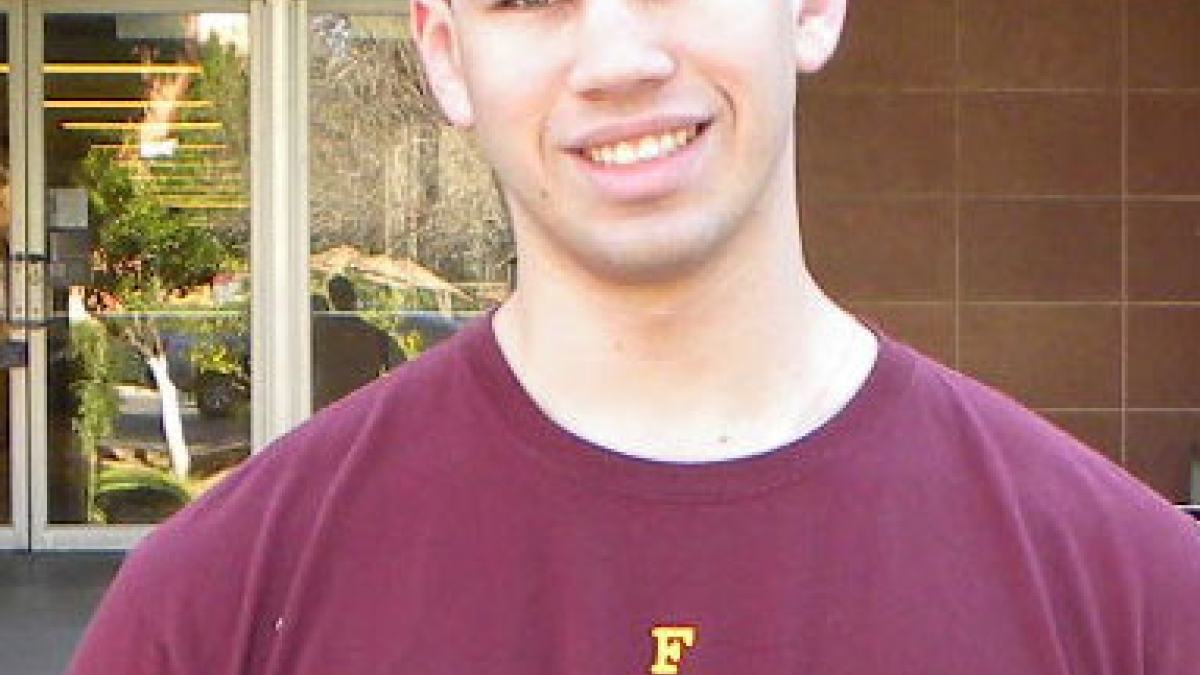Student contributes to cancer detection

Take a tour of ASU’s Virginia G. Piper Center for Personalized Diagnostics and you’ll find some of the most advanced technology available in the scientific world. But you won’t just find tenured professors with stacks of published papers conducting research here. You’ll also see ambitious undergraduates such as Paul Akhenblit, who is helping to make strides in cancer research.
Akhenblit is a student in the Department of Chemistry and Biochemistry within ASU's College of Liberal Arts and Sciences. He works in the LaBaer Lab, directed by Joshua LaBaer, a leader in the field of personalized medicine.
Before coming to ASU, LaBaer directed the Harvard Institute of Proteomics lab. There, he and his colleagues developed a way to study the human proteome, or all of the proteins in a person’s body. Proteins are found in human DNA and can provide clues about a person’s health. The technology that LaBaer developed, called Nucleic Acid-Programmable Protein Array (NAPPA), may lead to earlier detection of several diseases, including cancer.
“In the context of many diseases, patients sometimes produce antibodies against specific proteins related to the disease,” LaBaer said.
If you’ve ever had chicken pox, your body has produced antibodies to attack it. Those antibodies are still detectable in your blood, even years later. Similarly, someone with cancer or diabetes produces antibodies against specific proteins related to those diseases. The antibodies show up in the person’s blood before the disease does, so identifying them could lead to earlier detection of the disease.
To study this reaction, Akhenblit and other researchers create a protein microarray, or a “protein chip,” which is a glass microscope slide imprinted with thousands of different DNA sequences. These translate into thousands of different protein molecules. The DNA comes from both healthy people and people with some type of disease, such as breast cancer.
“In the traditional way of creating a protein microarray, we had to isolate the protein of interest and purify, amplify and store it,” Akhenblit said. That method was expensive and time-consuming, even with a simple protein. Using NAPPA, researchers are able to study many proteins all at the same time. Five glass slides can hold 10,000 of a person’s proteins. This is called the “10k collection.”
Researchers add a serum to the slides and look for a reaction from the proteins. The serum is blood with no red or white blood cells, taken from mice that were afflicted with some type of cancer. The mouse blood contains antibodies that were produced to fend off that cancer. By observing the reaction caused by the serum, the scientists are hoping to identify biomarkers.
“A biomarker is some kind of molecule that gives away its presence during a certain condition,” Akhenblit said. If antibodies in the serum react with certain proteins in the DNA of people with cancer, but do not react with those proteins in people without cancer, the identified proteins can serve as biomarkers.
So far, researchers at the LaBaer lab have identified 28 biomarkers for breast cancer. They hope to expand their research to find biomarkers for other types of cancers and diseases, including diabetes and arthritis.
Working in the LaBaer lab was not Akhenblit’s first experience as an undergraduate researcher. Starting his freshman year, he studied spider silk at ASU’s Magnetic Resonance Research Center.
“Spider silk is five times stronger than steel," Akhenblit said. "The military has a lot of interest in this for jets – making them super light but also much stronger.” Akhenblit added that the silk also could one day be used to replace damaged tendons.
As a biochemistry major planning to pursue a doctorate in cancer biology, Akhenblit was pleased with the opportunities for undergraduate research at ASU.
“Coming to ASU is probably the best decision I have made as far as academia goes,” he said. “I feel like I was involved with the right research group. It was the right place for me, and I don’t think you could go wrong by coming here.”
He also was very successful early on in his academic career, said Jeff Yarger, Akhenblit’s research advisor during his time at the Magnetic Resonance Center.
“What makes Paul in the top 10 to 20 percent of undergrads I’ve worked with is his ability and interest in the subject, as far as being self-motivated and curious in learning the material," Yarger said. "He wanted to get into the lab and figure things out for himself.” Yarger says added that for students majoring in lab-based sciences such as chemistry and biology, getting involved with research is essential.
“Learning stuff just in the classroom doesn’t give students the whole picture of what it’s like to have a career in one of those fields,” Yarger said.
LaBaer also encourages undergraduate students to participate in research. He explains that while lab courses are designed to give students a certain result on the first try, real research is much more unpredictable. This makes it more difficult, but also more rewarding.
“Real research is really standing at the very edge of human knowledge,” LaBaer said. “Everything that you’re looking out on in your horizon is stuff that hasn’t been done yet, and everything behind you is what’s already been done. You’re really at that cutting edge.”
Written by Allie Nicodemo, Office of Knowledge Enterprise Development